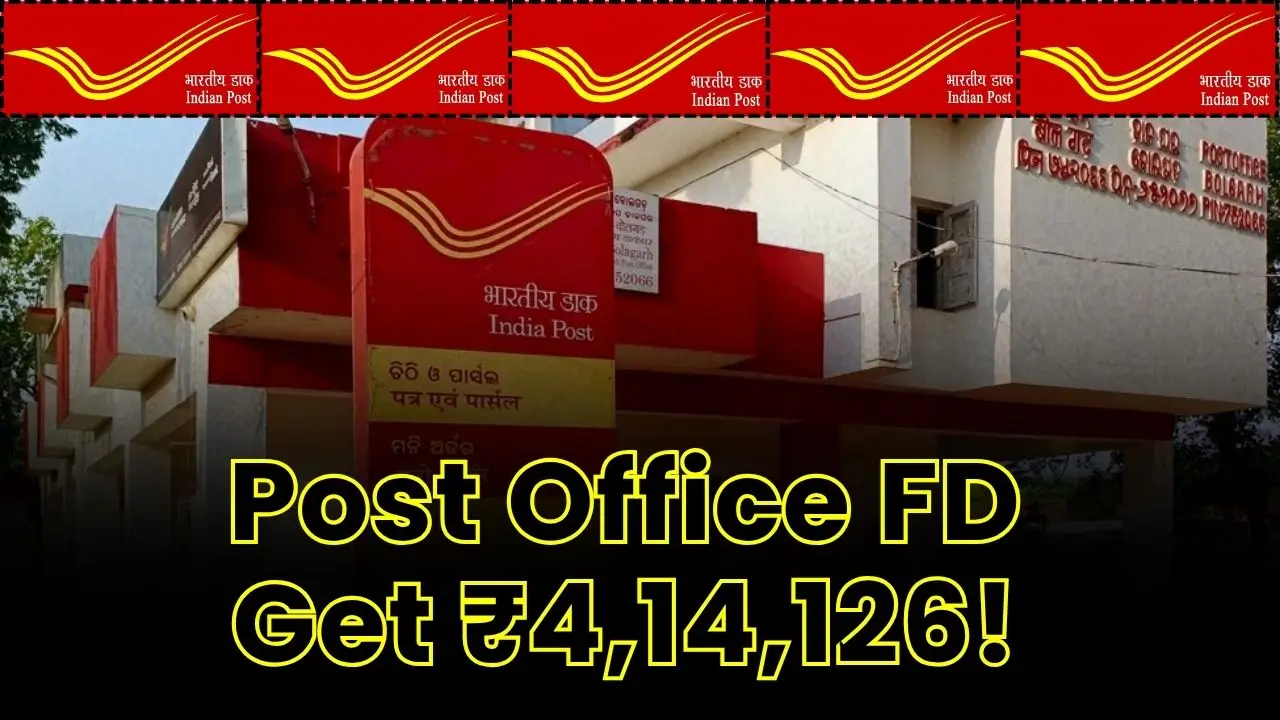Looking for a safe place to park money and still earn a decent return? Post Office FD 2025 – Deposit ₹10,000 and Get Guaranteed Interest is a simple, government-backed option with fixed tenures and assured rates, ideal for conservative savers and first-time investors alike. With interest rates of 6.9% to 7.5% for 1 to 5 years, quarterly compounding, and annual payout, it balances stability, predictability, and accessibility through India Post’s vast branch network.

Post Office FD 2025 – Deposit ₹10,000 and Get Guaranteed Interest stands out for offering sovereign-backed safety, clear rules, and consistent returns across four terms: 1, 2, 3, and 5 years at 6.9%, 7.0%, 7.1%, and 7.5% respectively for July–September 2025, with the Finance Ministry keeping rates unchanged for the quarter. Interest is calculated quarterly but paid annually, which nudges up effective yield while keeping payouts simple for tax and budgeting, especially useful when starting with a small lump sum like ₹10,000. The 5-year FD also qualifies for Section 80C deduction (old tax regime), making it a safe tax-planning tool in addition to being a reliable fixed-income anchor in a portfolio.
Post Office FD 2025
What Is Post Office FD 2025
Post Office FD (Post Office Time Deposit) is a fixed-term deposit administered by India Post under the National Savings framework, offering guaranteed returns notified every quarter by the government. It caters to savers who prioritize capital protection and predictable income over market-linked volatility, with uniform rates for all investors (no senior-citizen differential in POTD). India Post’s reach—over 1.5 lakh branches—ensures easy access in rural and semi-urban regions where bank choices may be limited.
Current Interest Rates For 2025
For July–September 2025, the slab remains steady: 6.9% (1 year), 7.0% (2 years), 7.1% (3 years), and 7.5% (5 years), as confirmed across official and aggregator listings. The 5-year slab at 7.5% is the highest and also qualifies for Section 80C, which can enhance post-tax outcomes under the old regime for eligible taxpayers. The rate announcement cadence is quarterly, so it is good practice to verify the latest slab when opening a fresh FD.
How ₹10,000 Works in Post Office FD
A ₹10,000 deposit compounds every quarter at the tenure’s rate, with interest credited annually, so the effective yield is higher than simple annual interest. Even with a modest principal, the structure builds disciplined returns, and depositors can add multiple FDs to ladder maturities across 1–5 years for liquidity and rate optimization. For those wanting monthly income instead, India Post offers the separate Monthly Income Account (MIS), but POTD itself pays annually.
Eligibility, Tenures, And Account Types
Individuals can open accounts singly or jointly (up to three), and guardians can open on behalf of minors; minors aged 10+ may operate the account independently. Four fixed tenures 1, 2, 3, and 5 years allow matching deposit duration with planned goals, from near-term purchases to medium-term safety nets. Multiple FDs can be opened without any upper cap on deposit size, giving flexibility to build a ladder or segregate goals.
Premature Closure And Extension Rules
Premature closure is allowed after 6 months; if closed between 6 months and 1 year, only savings account simple interest is paid, not the FD rate. If closed after 1 year, the payout is adjusted typically 2% lower than the corresponding tenure’s rate for completed years, with savings rate applying to the leftover partial year. Extensions are permitted within defined windows after maturity, enabling rollovers without breaking the safety and structure of the scheme.
Tax Treatment And TDS Pointers
Only the 5-year POTD qualifies for Section 80C deduction (old regime), which can lower taxable income up to the prevailing limit when claimed correctly in the relevant assessment year. Interest from POTD is taxable as per slab, and TDS may apply if thresholds are crossed, with different higher limits for senior citizens under Section 194A as per general rules explained by tax guides. Annual interest payout simplifies reporting, especially when holding multiple pots for different goals.
Who Should Choose Post Office FD
- Risk-averse savers valuing sovereign guarantee and predictable returns, particularly in volatile markets or when bank choices are limited regionally.
- Tax planners seeking a safe Section 80C option via the 5-year deposit under the old regime, while comparing post-tax outcomes with bank FDs and debt funds.
- Goal-based savers building a ladder across 1–5-year slabs to manage liquidity, reinvestment risk, and life events planning with clarity.
Tips To Maximize Returns
- Pick the 5-year slab when lock-in suits the plan; the 7.5% rate plus Section 80C may deliver better post-tax results for eligible filers.
- Use an FD calculator to visualize maturity amounts and compare laddering options before committing funds, especially when starting from ₹10,000.
- Align maturity with goal timelines to avoid premature closure penalties and preserve the intended effective yield from quarterly compounding.
Comparison Snapshot With Bank FDs
Many banks, especially large incumbents, show 5–7% ranges on 1–5-year deposits, while Post Office FD’s 7.5% at 5 years is often competitive and comes with sovereign backing. Small finance banks may advertise higher rates, but credit risk is materially different versus a government-backed small savings instrument, which is why POTD suits safety-first profiles. Consider access, payout preference, and post-tax returns when comparing alternatives, not headline rates alone.
Is Post Office FD 2025 Right Now a Good Deal
For those prioritizing assurance over chasing the last basis point, the current slab unchanged for July–September 2025 is a solid, low-friction pick that reduces decision fatigue and reinvestment risk. The combination of quarterly compounding, annual payout, and the 7.5% 5-year slab keeps it compelling for long-tenor needs while the 1–3-year slabs suit near-term goals. With a low minimum and simple documentation, it remains highly accessible for both metro and rural investors.
Grow ₹4 Lakh to ₹5.8 Lakh with Post Office FD: Full Return & Interest Details














